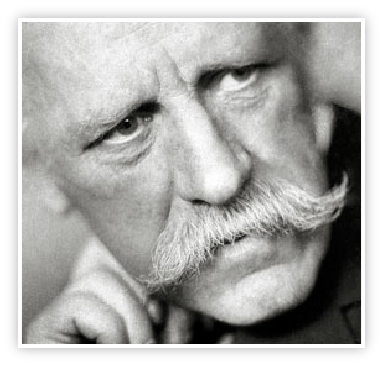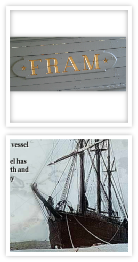




In 1879-81, the United States expedition of DeLong and Bennet ventured into Siberian Arctic waters. Their ship, the Jeannette, became frozen into ice and was destroyed near Jeannette Island. Three years later, relicts of the Jeannette were found in southwestern Greenland. The possibility of pack-ice drift across the Arctic Ocean was realized, and this was the basis for Nansen's next great expedition to the north. He conceived a specially built ship that would freeze into the ice pack near Alaska and drift across the Arctic to Greenland or Svalbard.
Nansen presented his proposal to the Norwegian Geographical Society in 1890 and to the Royal Geographical Society (London) in 1892. The plan was severely criticized. However, the Norwegian Parliament funded two-thirds of the cost; the remainder was paid by King Oscar II plus private contributions. The total cost was 25,000 £. Fram (meaning "forward") was an immensely strong, more than 400-ton ship built in Scotland. The design criteria included three main points.
Shape of hull should offer a minimal vulnerable target for attack by ice.
The hull should be able to withstand great pressure from any direction.
Mechanical system and crew provisions to survive a 5-year voyage in isolation.
This was the most remarkable set of criteria ever laid out for a voyage of exploration to that time. In its day, it was analogous to space-shuttle missions of the late 20th century. The resulting ship had a triple oak/greenwood hull, 24-28 inches (61-71 cm) thick. It could proceed under steam or sail power.
Nansen's Fram on display in the Fram Ship Museum, Oslo, Norway. This ship was used also by Roald Amundsen, who was first to reach the South Pole in 1911.
The Fram set sail from Christiania with Nansen, Otto Sverdrup (captain), and a crew of 11 on June 24, 1893. The expedition sailed around Norway, to Novaya Zemlya (Russia), across the Kara Sea, and past Cape Chelyuskin. The ship became frozen in north of the New Siberian Islands at 78°N latitude in late September. The long drift began. The Fram bore the ice pressure easily.
In March of 1895, Nansen and Frederik Johansen departed the Fram and attempted to reach the North Pole. They took three dog sleds for crossing the ice and kayaks to traverse open water. They actually reached 89°14' N latitude, the farthest north anyone had been at the time. They turned back when their dogs began to give out and reached Franz Josef Land, where they spent the winter, August 1895 to May 1896. They lived in a hut they made of stone with a roof of walrus hides; they ate polar bear and walrus using the blubber as fuel.
Nansen and Johansen started to Svalbard the next summer and met Jackson's party from a British expedition. They returned to Norway on the British ship Windward, reaching Vardø on August 13, 1896. Meanwhile, the Fram drifted as far north as 85°57' and eventually was released from the pack ice. Many scientific observations and experiments were conducted. Nansen, Fram and crew were reunited finally and returned to Christiania on September 9, 1896 to a hero's welcome.
A 2-volume work on Fram over Polhavet was published in 1897. The English translation, titled Farthest North, came out the same year. Nansen's success as an explorer was due to his careful evaluation of difficulties and risks, thorough planning, and meticulous attention to detail.
